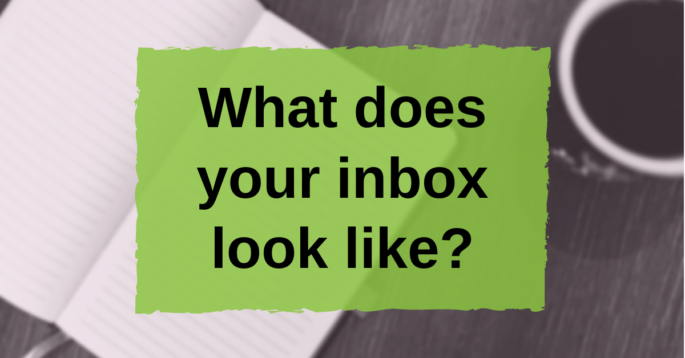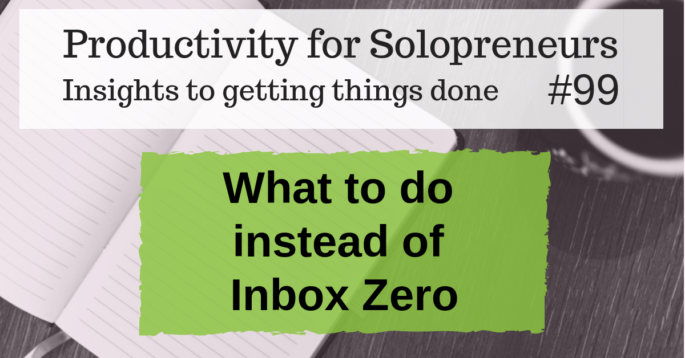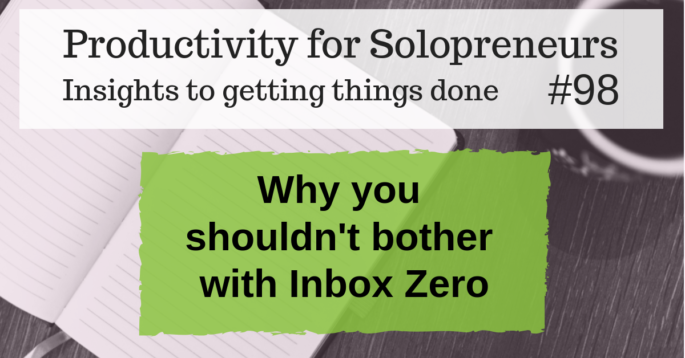What does your inbox look like?
If it’s anything like mine, a few emails are hanging around in there.
Okay, so maybe there are more than a few.
People assume that my inbox is pretty empty. It’s not.
However, compared to some people’s inboxes, it is.
I occasionally have conversations with people who aspire to live in the mythical land of having nothing in their inbox. Everything is read, replied to, and sorted out of it.
But that never happens. They run out of time to do anything other than respond to the time-sensitive emails, and everything else ends up piling up.
Two things to keep in mind when it comes to your email:
- You don’t need to be at “Inbox Zero.” Instead, you should have it at a level that is manageable for you.
- If you don’t put time for your email on your schedule or to-do list, you’ll always run out of time for it.
All time spent in your email is not equal. It’s easy to say, “set aside time for your email.” But you need to schedule different purposes to be in your email.
Set time aside to sort your email.
You might be able to sort it in 15 minutes, but you won’t be able to read things or respond to everything in that time.
Sort your emails into these categories and schedule time for them:
- Things you need more time to read.
You might put these emails into a separate folder and come back to read them later. Most newsletters will fall into this category. - Decisions to be made or things to research.
Will you attend that networking event? What’s the next step for that project that someone’s asking about? Do you remember who we hired to do that thing two years ago? These things need to be put individually on your to-do list. If you leave them in your email, they won’t get done. - Responses that need to be written.
Set time aside to respond to your email. This might be regarding the decisions you made, or it might be seemingly quick responses (that never actually seem to be quick).
Set time aside for these different actions for your email and your email will be more manageable!
You might have different email categories on your to-do list, and I’d love to know what they are! Share in the comments.



